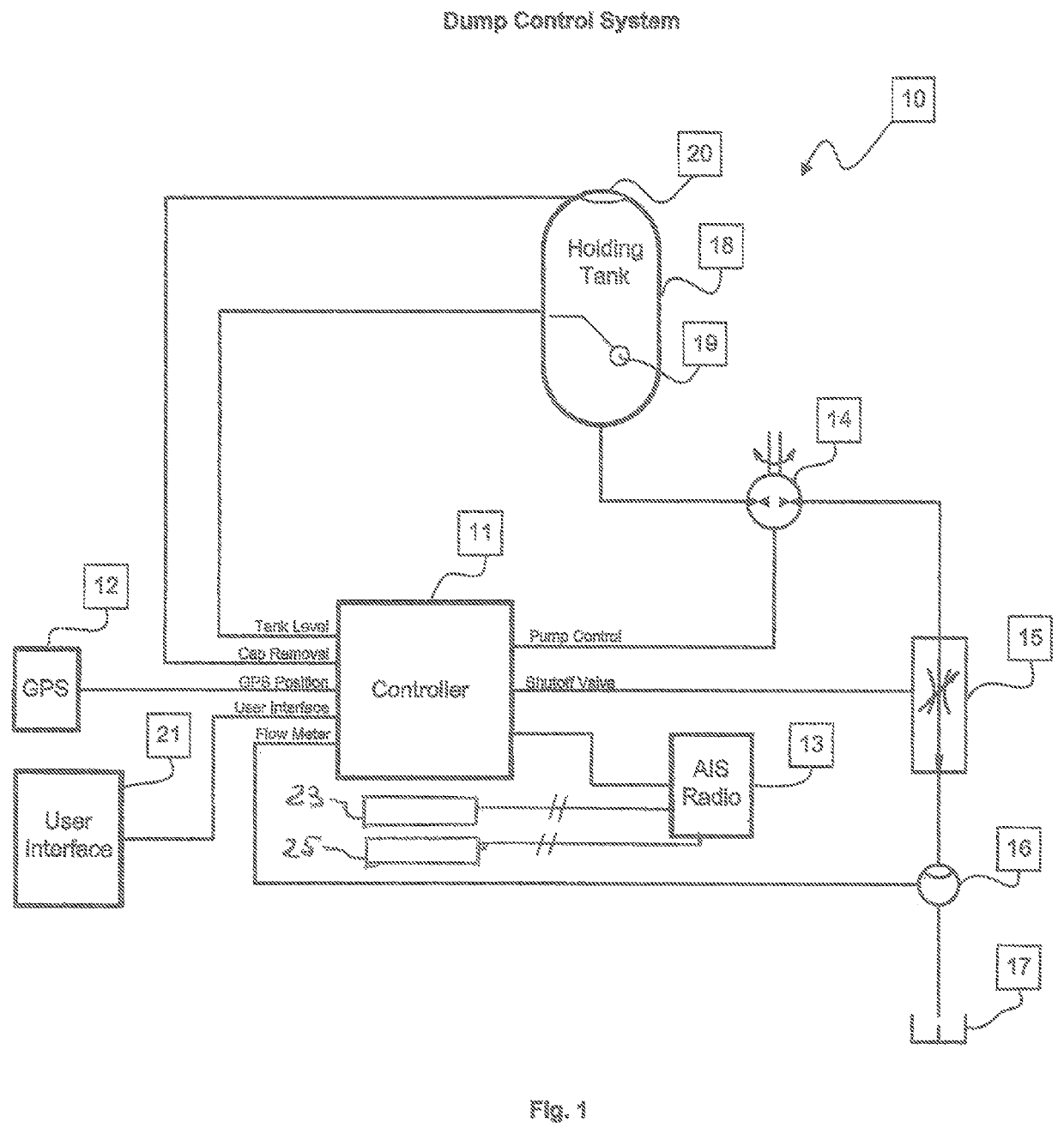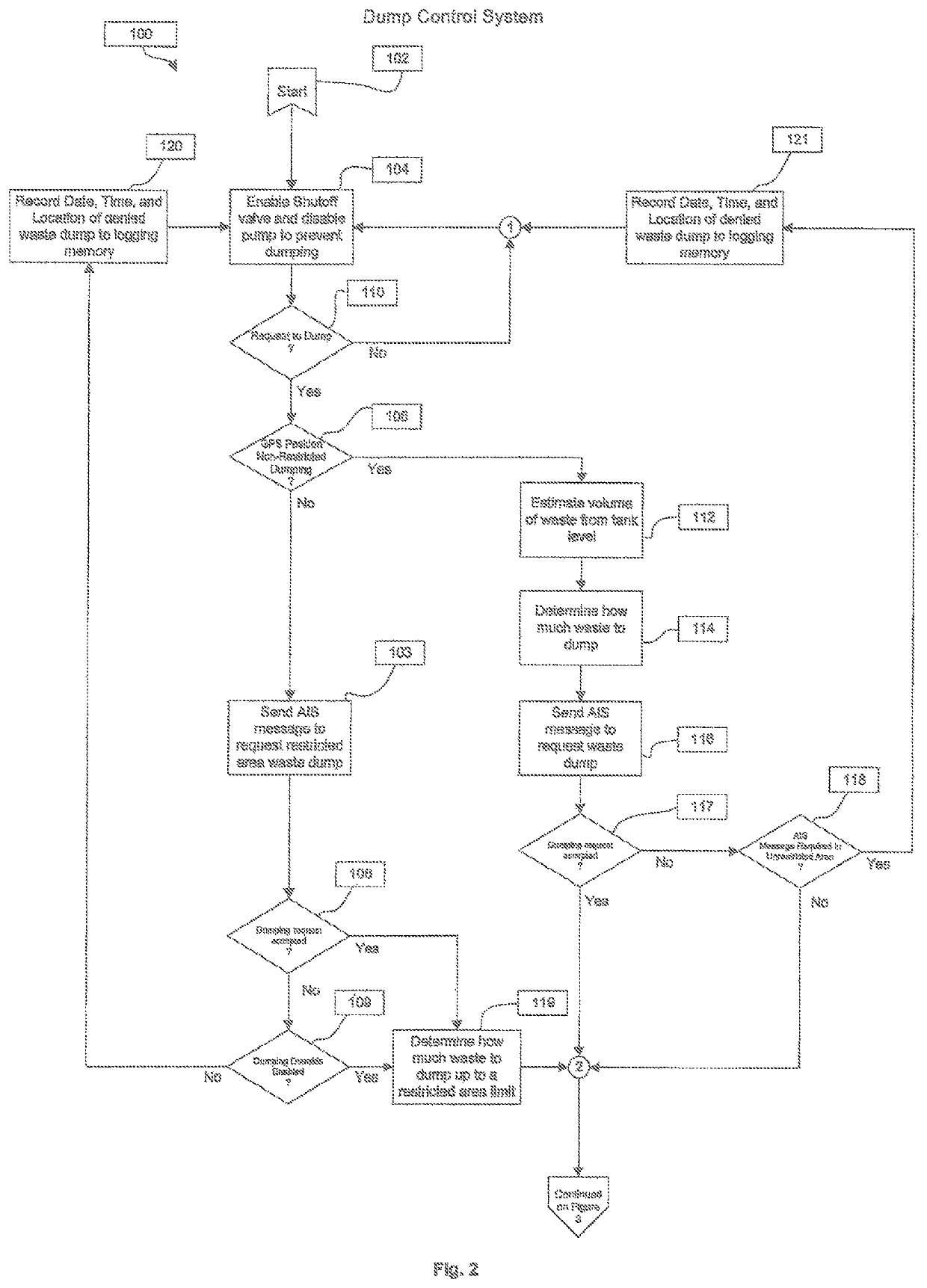Marine waste water dump control system
a control system and waste water technology, applied in the direction of sewage draining, instruments, vessel construction, etc., can solve the problems of inability to accurately determine the distance of the vessel from the coast, the vessel cannot be disposed of waste water, and the laws and regulations are routinely violated, so as to accurately determine the distance of the vessel
- Summary
- Abstract
- Description
- Claims
- Application Information
AI Technical Summary
Benefits of technology
Problems solved by technology
Method used
Image
Examples
Embodiment Construction
[0029]With reference to the drawings in which like reference designators refer to like elements, FIGS. 1 to 6 depict the preferred embodiment of the instant invention which is generally referenced as a marine waste water dump control system, dump control system, system and, or by numeric character 10. The marine waste water dump control system 10 of the instant invention provides a system and process for automatically monitoring the time, GPS location, and quantity of waste dumped from a water vessel and for requesting and receiving approval or disapproval for dumping marine water waste into restricted or unrestricted waters, including black water, gray water, bilge water, oil water and the like. In accordance with the instant invention, vessels having an AIS (Automatic Information System) or comparable communication system for communicating with marine authorities, such as the Coast Guard, would use the dump control system 10 and their communication system to transmit dumping relat...
PUM
 Login to View More
Login to View More Abstract
Description
Claims
Application Information
 Login to View More
Login to View More - R&D
- Intellectual Property
- Life Sciences
- Materials
- Tech Scout
- Unparalleled Data Quality
- Higher Quality Content
- 60% Fewer Hallucinations
Browse by: Latest US Patents, China's latest patents, Technical Efficacy Thesaurus, Application Domain, Technology Topic, Popular Technical Reports.
© 2025 PatSnap. All rights reserved.Legal|Privacy policy|Modern Slavery Act Transparency Statement|Sitemap|About US| Contact US: help@patsnap.com



